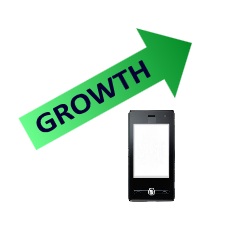 Apple is losing ground in the tablet market where it has always held the top spot.
Apple is losing ground in the tablet market where it has always held the top spot.
T-commerce has always been an area in which Apple has held the lead, but with smaller, cheaper tablets based on Android technology becoming increasingly popular, iPads are starting to lose their dominance.
The research firm IDC has predicted that Android tablets will soon be taking the lead.
This news from IDC could be extremely defining for the t-commerce world, as it could change the marketing and shopping strategies for many companies that have been placing their primary focus on the Apple devices due to their reining popularity. However, as Android tablets start to step forward, those companies may soon find themselves changing direction to appeal to the new leader in the industry.
The projections from IDC show that Apple will fall behind Android in t-commerce before the close of 2013.
The t-commerce industry has been taking on new direction over the last few releases from Apple, as consumers focus more on convenience and price. However, even as the iPad Mini was released with a 7.9 inch screen and a smaller price tag, it didn’t appear to be enough to keep up with the massive number of Android tablet options currently on the market.
IDC believes that before the end of the year, should the trends continue in the same direction – and it looks as though that will be the case – the iPad of all shapes and sizes will need to give up its number one spot as the leading t-commerce platform.
The current trend is showing that the screens in the size from 7 to 8 inches will be driving the shipments for tablets around the world to reach 191 million by the end of 2013. That has risen from an original forecast that had been 172 million. According to an IDC program manager, Ryan Reith, “iOS tablets have already lost ground to Android tablets.”
This has been a considerable shift in the t-commerce world, considering that in 2011, 56 percent of the worldwide market was held by iOS, with Android well behind it at 40 percent.

 There are many drivers that are sending this channel right to the brink of its fastest increase yet.
There are many drivers that are sending this channel right to the brink of its fastest increase yet.